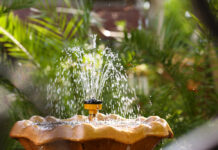Flooding is among the most prevalent (and perhaps the most costly) natural disasters in the United States. It presents significant risks to the health, properties, and well-being of populations in particular. In reality, waterlogging harm is one of the critical factors that a growing number of citizens are focusing on for their homes and flooding insurance.
Still, aside from protection, it’s crucial to take the appropriate steps to mitigate the risk of the damages that may result from floodwater. You can’t eliminate the danger of flooding, but you can take these five great measures to secure your house.
1. Keep Gutters Clean
The main objective of having gutters is to securely drain water from the foundation of the household and from the roof. If gutters are clogged with birds’ nests, rocks, and other objects, the water is likely to leak out early and flood the attic or basement. That said, spend a little time ensuring that your gutters are free of sediment to better channel the water out of the foundation of the house.
2. Check for Cracks Around Your Home’s Foundation
Before dealing with rough weather, owners must constantly check the foundations of their houses for cracks or holes. The same can be said for the basement walls and floors. Epoxy and masonry seals can be used to deal with issues, but it may be sensible to call a specialist if there are serious cracks or holes.
3. Make Sure Your Sump Pump is Working
It is a fair probability that a sump tank still exists for houses with flood-prone basements, and a sump pump was built for them. When flood water enters the tank, the sump pump drains it from the basement. Test the working state of your pump daily to ensure that it performs its job in a crisis.
4. Consider a Generator
Keeping a generator on hand can allow the pump and other main pieces of equipment to continue working during the unavoidable power outages caused by most extreme weather situations. It is important to select the correct generator to power all of the necessary gear you need to keep running. Contact a generator backup expert for guidance as to which generator model will suit your needs.
5. Create an Emergency Flood Plan
Natural disasters like floods can happen at any time, which is why you should start preparing an emergency plan for your family. Kids must be well-educated about safe locations to go to if they can’t get home just after a flood. Inform them of the risks of a flood and educate them on standard precautions.
Keep a small flood package filled with protective supplies, including a waterproof paper bag, wind-up phone, wind-up torch, latex boots, and rescue foil blankets. As water continues to increase, take prompt protection precautions such as turning off the power at the breaker panel and cleaning the gutter and drains if there is any clogging. You can also get a submersible pump that works like magic.
There can be a flood at any moment, but it’s easier to be ready and secure than to be ill-prepared and sorry. You may not be able to completely avoid damage, but implementing a few preventative protection precautions will go a long way in helping you prevent losses.
Find a Home-Based Business to Start-Up >>> Hundreds of Business Listings.
















































